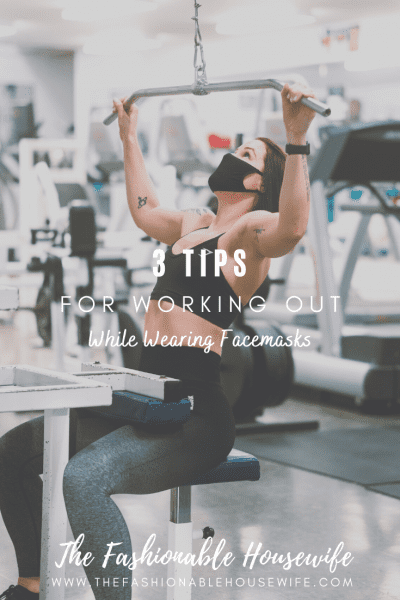
Are you one of the people who find it uncomfortable to exercise when they have a mask on? If you are, you need to embrace the new norm as face masks prevent the spread of infectious diseases such as Covid-19. Wearing it is safe since your respiratory rate, blood pressure, heart rate, and other important body functions will not be affected. However, there are tips that you need to remember when exercising with an exercise facemask on. Some of them are discussed below.
1. Put On The Right Mask
With the spread of Covid-19, people have manufactured all kinds of face masks. Do not go out and start buying just any mask. Instead, look for an exercise facemask that covers your nose and chin without leaving any gaps on the side. It should not shift when you run or move around. If your mask is too big or too tight, you will have to frequently touch your face when you keep adjusting it. This should be avoided!
The mask should also be made from a moisture-wicking but breathable fabric. Such a mask will stay dry throughout your exercising period and will allow you to breathe freely. You can know if a mask will allow you to breathe freely by wearing it while walking. Masks that allow you to breathe freely when walking will also allow you to breathe freely when exercising.
You should also ensure that the mask is washable as such masks do not get soiled by sweat easily. If you buy surgical facemasks, they might break down when they become wet as a result of your sweat. You can, however, buy surgical face masks as they might not easily break down like the 2-ply ones. If you buy such masks, dispose of them immediately after use.
2. Only Touch Your Mask When Necessary
You will probably have the urge to adjust your exercise facemask every now and then when working out. It is not advisable to do so as you might end up transferring viruses from your hands to your nose and mouth. Therefore, try as much as you can not to fidget with your mask when working out. If you have to adjust it, do it after using hand sanitizer or washing your hands. You should also not remove it when talking as the transfer of viruses between you and the person near you might occur.
If you have to remove your mask when working out, wash your hands with soap and water or sanitize them before removing the mask. After this, handle the mask by the ear ties or loops and remove it. If you touch its front side, you might transfer germs from the exercise facemask to your hands or nose.
After removing the mask, sanitize or wash your hands with soap and water. Washing them will remove any viruses that you may have transferred from the mask to your hands.
3. Monitor Your Body Reactions When Exercising With A Face Mask On
If you are not used to exercising with a mask on, you are likely to feel uncomfortable whenever you exercise while wearing it. Feeling such is normal, and it may be no different from how you felt when you first wore a mask when going out to shop. The feeling is likely to decrease over time and will not affect your anaerobic and aerobic performance.
You might also experience shortness of breath, dizziness, muscular weakness, or drowsiness when exercising with a mask on. These symptoms are normal to people who are not used to exercising with masks on. However, you can reduce them by taking frequent breaks when exercising and avoiding strenuous exercises. If they worsen, stop exercising and seek medical attention.
You should monitor your body reactions using a smartwatch or a fitness tracker to avoid health complications. These devices will monitor your heart rate and oxygen level. You might notice an increase in your heart rate after doing some exercises with a mask on. If it goes too high or you feel fatigued, reduce your exercise intensity and remove the mask to increase oxygen flow.
The outbreak of infectious diseases such as Covid-19 should not stop you from exercising. However, you need to put the right exercise facemask on when going to a public gym. If you get the best custom facemask, you will feel stylish and stay protected. You should adjust it when necessary and monitor how you feel throughout the exercising period. If you feel very uncomfortable when exercising, stop the activity until you feel okay.



